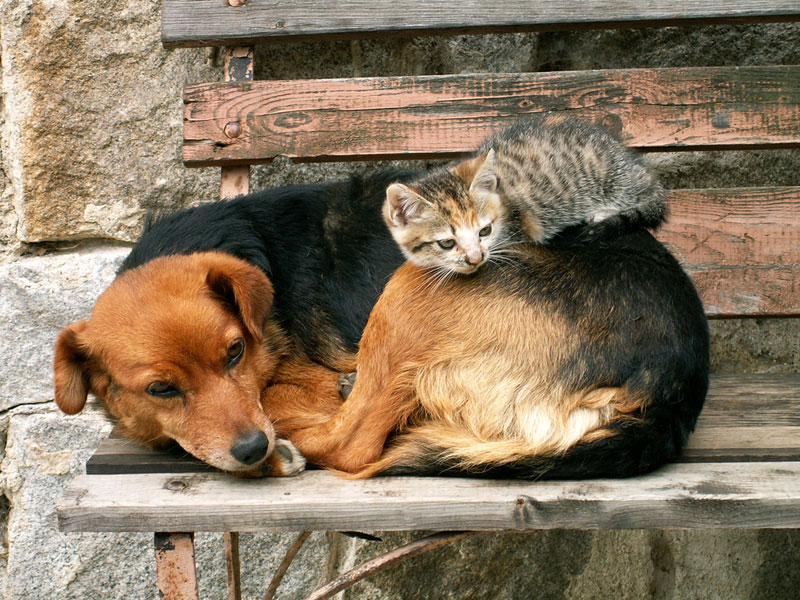From the way they tilt their heads to the way they curl up when they’re content, there’s a whole world of signals our pets are sending us. And while it might take some time to get the hang of it, with a bit of patience and observation, we can start to pick up on their cues.
But here’s the thing: while we’re busy playing detective, let’s not forget about their well-being. That’s where pet insurance comes in handy.
So let’s protect our furry friends with the best pet insurance and create a home where understanding and harmony reign. After all, who knows what other secrets they’re hiding behind those curious eyes and twitching tails? It’s all part of the adventure of being a pet parent!
Here are the different ways dogs and cats communicate
1. Body language
- Dogs and cats communicate primarily through body language.
- Understanding signals like tail position, ear orientation, and overall posture is crucial for interpreting their intentions.
2. Vocalisations
- While both species use vocalisations, dogs and cats have distinct sounds.
- Dogs whine, bark, whimper, and growl, while cats meow, chirp, trill, purr, yowl, snarl, and hiss. Understanding these vocal cues helps with effective communication.
3. Tail language
- A dog’s wagging tail may indicate excitement or friendliness, while a cat’s upright and quivering tail signals contentment.
- Tail language varies between species, and misinterpretation can lead to misunderstandings.
4. Eye contact
- Direct eye contact in the animal kingdom can be seen as a sign of dominance or aggression.
- Understanding the appropriate level of eye contact helps prevent conflicts between dogs and cats.
5. Scents and marking
- Both dogs and cats use scent markings to communicate.
- Dogs often sniff to gather information, while cats use scent glands on their face and paws to mark territory.
6. Play behaviour
- Play behaviour differs between dogs and cats.
- Dogs may engage in rougher play, including wrestling, while cats prefer stalking and pouncing games.
7. Space and territory
- Dogs may be more territorial, especially in the presence of their owners.
- Cats are territorial by nature and may need time to adjust to new environments or companions.
8. Hierarchy dynamics
- Dogs are pack animals with a clear social hierarchy and may view the household as their pack.
- Being more independent, cats establish territories and may form loose hierarchies in multi-cat households.
9. Socialisation techniques
- Early socialisation is vital for fostering positive relationships between dogs and cats.
- Gradual introductions, positive reinforcement, and supervised interactions can promote harmony.
10. Understanding fear responses
- Fear responses vary; dogs may bark or cower, while cats may arch their backs and puff up.
- Recognizing fear signals helps owners create a safe and comfortable environment.
11. Pheromone communication
- Cats release pheromones through facial glands, marking objects and other animals.
- Dogs also have scent glands, and understanding these chemical cues aids in their communication.
12. Patience and observation
- Building a strong bond between dogs and cats requires patience and keen observation.
- Owners should be attentive to individual preferences and behaviours, fostering peaceful coexistence.
Deciphering their signals—whether it’s a wagging tail or a subtle purr—helps us build stronger bonds with our furry friends and ensures everyone in the household is happier and on the same page.
At the same time, having the best pet insurance in place ensures that your pets get the care they need without any financial worries on your end.
So, consider investing in pet insurance. It’s a wise step toward a future filled with harmony, understanding, and peace of mind for both you and your beloved pets.










